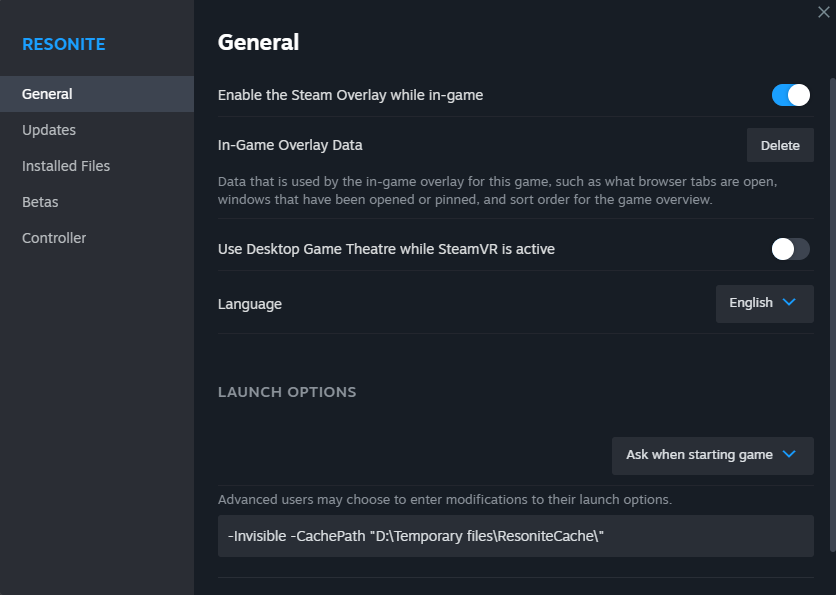Removed DO NOT bullets involving adding to sync queue. Sync conflicts do not prevent other items from syncing unless those items face a sync error. |
m Adding a command line argument - fix spacing. sry im in that sorta mood of just fixing tiny errors |
||
| Line 36: | Line 36: | ||
<!--T:9--> | <!--T:9--> | ||
# <code>-DeleteUnsyncedCloudRecords</code> will delete any local(to your computer) un-synced files/items from your computer and re-download the cloud copies. Only use this command if you are certain you will not lose important files/items when they are deleted from your computer. | # <code>-DeleteUnsyncedCloudRecords</code> will delete any local (to your computer) un-synced files/items from your computer and re-download the cloud copies. Only use this command if you are certain you will not lose important files/items when they are deleted from your computer. | ||
# <code>-ForceSyncConflictingCloudRecords</code> will force the conflicting local files/items to be uploaded to the cloud. This will overwrite the existing cloud files/items with your local copies. This can overwrite your cloud data with an earlier/incorrect version, so use it carefully. | # <code>-ForceSyncConflictingCloudRecords</code> will force the conflicting local files/items to be uploaded to the cloud. This will overwrite the existing cloud files/items with your local copies. This can overwrite your cloud data with an earlier/incorrect version, so use it carefully. | ||
Latest revision as of 16:26, 7 June 2024
Sync Conflicts can occur when a local asset is out of sync with the data stored on the cloud. This can occur for a variety of reasons. You can check the Log Files to see which files are conflicting, and whether the local, or cloud storage is newer. Just open these in a text editor to view them.
Ensure you're reading the right guide
We have multiple guides for Sync related matters, please ensure you are reading the correct one for your problem, for the "Hub" of these see Sync Errors BEFORE you start.
These problems are slightly different and may require differing steps, so we've split them into separate guides.
Actions to Avoid
When you have determined that you have a Sync Conflict with one or more records, please avoid performing the following:
- Deleting your Resonite database, asset files, or cache files. Doing this will likely make you lose your un-synced items as well as cause other side effects.
- Reinstalling Resonite. Doing this does not help syncing issues as these are stored in a separate location.
Figuring out what isn't syncing
This step is optional, but think about what you were doing just before the sync conflict occurred. Were you working on something important? How you follow these next steps may determine if this work is recoverable or not. So it is a good idea to think about what you were doing and how important it was. The following steps can help you.
- Find your log files and open the LATEST one.
- Once the log file is open, look for the phrases "unsynced record", "failed sync", "Record preprocessing failed" or similar, using the "Find" feature(usually CTRL + F)
- If you find instances of this text then you can read them to figure out what is not syncing. For example it might say near this text something like "Home" or "Avatar". This will tell you what's failing to sync.
- Based on what is failing to sync, think about how important that work was.
If you're not sure, ask in our discord, make sure to provide the log file and someone will be able to help you.
Adding a command line argument
Now you've had a chance to think about/look at what is not syncing, you will need to make a choice between two options:
- Deleting the un-synced content this will lose any work that did not successfully make it to the cloud.
- Forcing an overwrite from your local content to the cloud. This is good if you know the copy of your content on your computer is newer.
Based on your decision, you will then need to add ONE of the following command line arguments to your copy of Resonite:
-DeleteUnsyncedCloudRecordswill delete any local (to your computer) un-synced files/items from your computer and re-download the cloud copies. Only use this command if you are certain you will not lose important files/items when they are deleted from your computer.-ForceSyncConflictingCloudRecordswill force the conflicting local files/items to be uploaded to the cloud. This will overwrite the existing cloud files/items with your local copies. This can overwrite your cloud data with an earlier/incorrect version, so use it carefully.
To add these to Resonite follow the following steps:
For Steam
- Open Steam
- Right click on Resonite in your library
- Select "Properties" and then "Set Launch Options".
- Enter the command you need to use, exactly as it appears above and Run Resonite.
Now, if Resonite is launched via Steam, the custom command line arguments will take effect.
Commands entered via this method will not take effect if Resonite is launched any other way, such as directly launching the Resonite.exe.
Running Resonite
Once you've added one of the above commands following the above instructions. Run Resonite once, when it is running look for All Synced at the top center of your Resonite Dash. This will indicate that the sync issue has been resolved.
Cleaning Up
Once the issue is resolved, remove the command line argument that you added. It is only needed while you are actually fixing the conflict. Leaving these command line arguments in place permanently may result in data loss.
Other Issues
If you believe that the syncing issue is caused by something else please double check our other Sync Errors guides.
